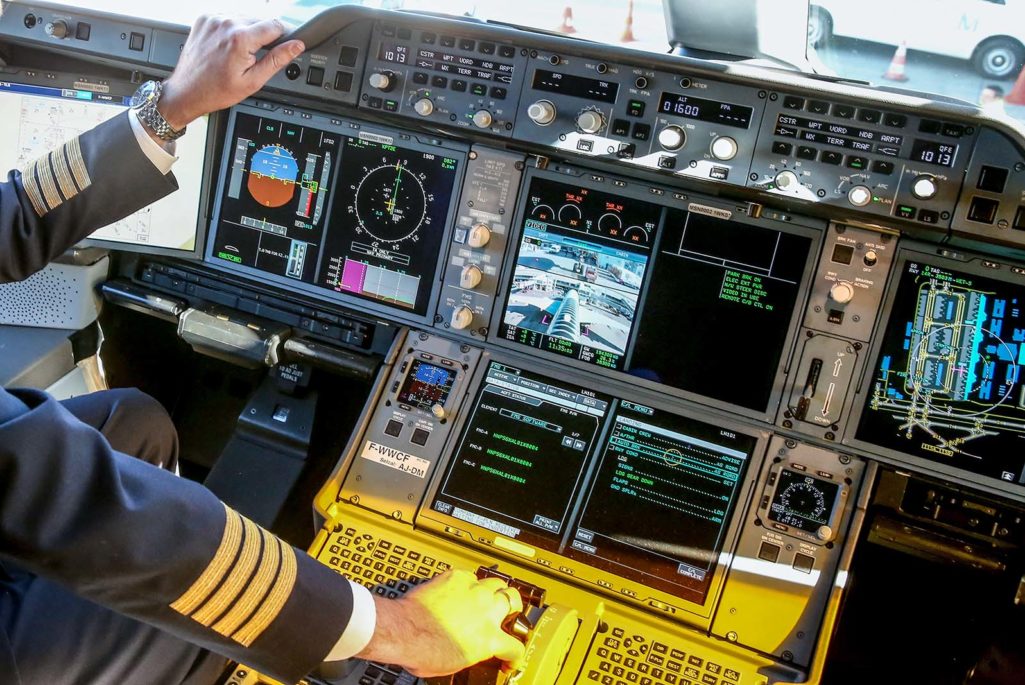Will Automation Solve the Ongoing Risk of Aviation Crew Fatigue?

Some have suggested that automation can relieve crews from having to deal with routine tasks to ease their workday, and thanks to the data generation and advanced computational capabilities of the newest generation of aircraft, more options for task automation are emerging.
Photo: Alexander Hassenstein/Getty Images
Like most prescription drugs, the remedy sometimes has unexpected side effects. So it is for automation, when applied as a solution to aviation’s ongoing problem of crew fatigue. While artificial intelligence, machine learning, and advanced analytics hold much promise for task automation on aircraft, airlines may want to coordinate any automation efforts with state-of-the-art crew fatigue management plans for the best results.
The risk of crew fatigue persists for airlines, despite the 2013 flight-time regulations known as FAR 117 from the U.S. Federal Aviation Administration. The rules incorporated the latest in fatigue science, but similar rules have yet to be adopted worldwide, and the science of fatigue management itself has continued to advance.
Fatigue is not just about being tired; sleep will remedy being tired. Fatigue is cumulative, the product of an incomplete recovery from days of insufficient sleep. It affects people who consistently work long hours under stressful conditions, and for aviation, its consequences include declining health and productivity of flight crews, rising staff attrition and safety concerns.
Some have suggested that automation can relieve crews from having to deal with routine tasks to ease their workday, and thanks to the data generation and advanced computational capabilities of the newest generation of aircraft, more options for task automation are emerging.
Innovations on the Horizon
While airplanes have long been able to fly on autopilot, researchers are now testing resilient machine-learning-based autopilot systems that can adapt to changing conditions and even crises. These systems “learn” from experienced pilots how to react to situations, rather than having to be explicitly “hard coded” with instructions for every conceivable circumstance.
Ultimately, technology is likely to evolve over time to the point where one cockpit crew member is able to handle a sizable chunk of a flight, with automation as the co-pilot—a potential boon given the anticipated pilot shortage. Eventually, a remote pilot on the ground could take the second cockpit seat on some flights or flight segments. But those advances are many years off.
Among other future automation possibilities are artificial-intelligence-based weather and radar monitoring that allows pilots to see a more complete picture of the weather ahead without consulting several different monitoring systems and electronic stability and protection systems that monitor and maintain the altitude of an airplane even when autopilot is off. Also being tested are virtual assistants that use speech recognition and voice commands to alert crew members of cockpit tasks that need to be completed.
Before making decisions on task automation, determine which phases of flight present higher risks for fatigue.
Crew Fatigue Technology
Of course, technology is even tackling the fatigue question with the development of machines that monitor fatigue and adjust the level of automation to ensure sufficient crew engagement. For instance, the trucking industry already uses a system to monitor eye and eyelid movements of drivers to ensure they are alert.
Still, automation is not a panacea and may introduce unexpected risks. Research suggests that reducing or eliminating the stimulation of manual tasks may slow reaction times and bring other fatigue symptoms to the fore. One danger is the phenomenon of microsleeping—moments when part of your brain goes offline, so to speak, while other parts may remain in wake mode. The phenomenon has been identified as a frequent cause of automobile accidents.
The smart way to incorporate automation is by developing a long-term crew fatigue strategy that recognizes automation’s risks as well as its rewards. A robust fatigue management strategy includes conducting a detailed assessment of fatigue causes; correlating data on actual duty times and activities with fatigue reporting; gathering crew feedback through interviews; and developing a fatigue risk management system that focuses first and foremost on fatigue prevention.
Addressing the Causes
A big part of prevention is developing realistic and resilient crew schedules that incorporate the latest in fatigue science and accurately reflect the challenging operational environment. FAR 117 has gone a long way to begin that process, but in some cases, regulations have fallen short on addressing the full spectrum of issues that lead to fatigue.
While rules exist that govern how many hours crews can work (and how often they can work overtime), regulations vary by geographic market, and limits on flight duty periods do not always take into account more qualitative factors, such as tough routes, cumulative schedule intensity (such as during the busy summer travel season), and the impact of standby duty.
Before making decisions on task automation, it is important to determine which phases of flight present higher risks for fatigue. And, for days when things don’t go as planned, standard protocols need to include enough emphasis on crew fatigue and the impact of the disruption on crews.
As airlines adopt technology to collect and analyze the reams of technical flight and equipment data being generated, they have an opportunity to incorporate into those new systems capabilities to gather more information on human factors that could provide greater insights into fatigue.
No doubt, this is a tricky balancing act for both airlines and regulators. Still, the payoff for good fatigue management coupled with cautious adoption of AI systems can be substantial—excellent safety records, higher crew productivity, and happier customers.



